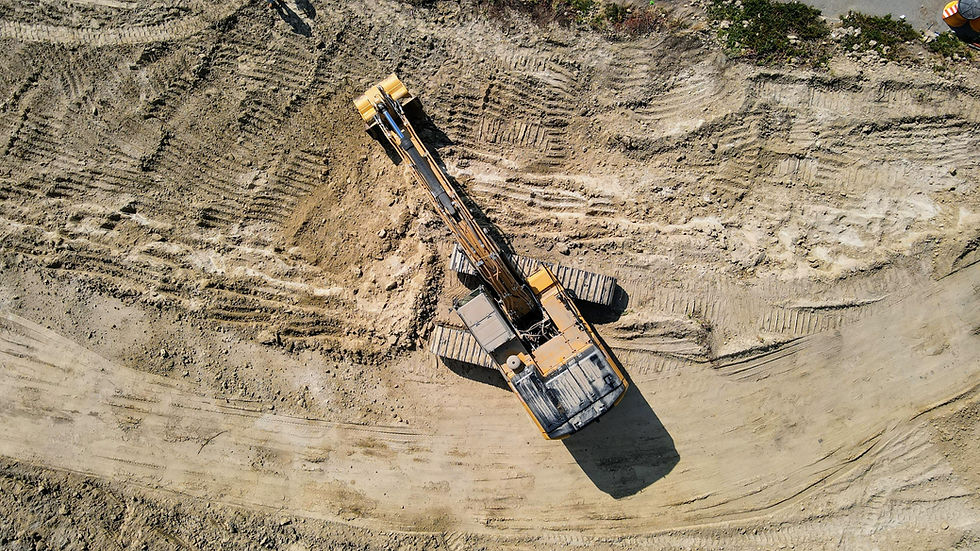The Impact of AI and Automation on the Future of the Mining Industry
- marketingteam676
- May 9
- 3 min read
In today’s fast-paced world, where technology impacts nearly every facet of our lives, the mining sector stands at the forefront of innovation. With a growing demand for minerals and resources, mining companies face the challenge of improving efficiency and sustainability. Enter artificial intelligence (AI) and automation. These technologies are not just buzzwords; they are actively transforming the mining industry, streamlining processes, boosting safety, and reducing environmental impact. In this article, we will explore how these advancements are changing the landscape of mining.
Understanding Automation in Mining
Automation in mining involves using technology to perform tasks that were once done by humans, such as excavation, processing, and transportation. This includes robotic systems, autonomous vehicles, and AI-driven software solutions.
Automation improves operational efficiency dramatically. For instance, autonomous trucks can operate 24/7 without breaks, leading to up to a 30% increase in production rates. Additionally, the precision offered by automated drilling techniques reduces waste by almost 15%, allowing companies to maximize profit margins.
Moreover, automation enhances safety. With machines performing tasks in hazardous environments, the risk of workplace accidents declines significantly. For example, companies using autonomous drilling reported a drop in injuries by over 40%, demonstrating the potential for safer operations.

AI's Role in Decision-Making
Artificial intelligence is now a key player in the strategic decision-making processes of mining companies. By analyzing large amounts of data from various sources, AI can provide valuable insights for resource management and operational strategies.
Predictive analytics is one prominent use of AI, forecasting equipment failures with an accuracy of up to 90%. This allows companies to perform maintenance before breakdowns occur, preventing costly downtime which can reach thousands of dollars each hour.
AI also revolutionizes exploration. Machine learning models can analyze geological data to identify potential mineral deposits. Companies that use AI in exploration have seen a 20% faster identification of valuable resources, enabling them to make quicker, more informed decisions while reducing unnecessary exploratory drilling that can harm the environment.

Enhancing Safety and Sustainability
With climate change and environmental issues growing in urgency, the mining industry is increasingly pressured to adopt sustainable practices. AI and automation are playing vital roles in this transition.
AI can optimize energy consumption, helping mining operations reduce their carbon emissions by up to 25% during operations. For example, by analyzing operational data, AI-driven systems can recommend the most efficient equipment and scheduling to minimize energy use.
Real-time monitoring powered by AI helps companies track their environmental impact. For instance, water management systems can detect leaks, reducing water waste by as much as 35%. This ensures water resources are utilized efficiently, promoting responsible consumption.
By focusing on safety and sustainability, mining operations can not only meet regulatory requirements but also enhance their reputation as environmentally responsible entities.
Challenges and Considerations
While the advantages of AI and automation are significant, challenges remain. The initial costs for technology and infrastructure can be steep, potentially reaching millions for larger operations. Moreover, as machines take over roles traditionally held by humans, concerns about workforce displacement must be addressed.
To navigate these challenges, mining companies should invest in retraining programs for their workforce. By upskilling employees, companies can ease fears about technology replacing jobs and instead foster a versatile workforce prepared for a technology-driven environment.
As AI becomes more integrated into mining operations, considerations around data security and ethical decision-making are critical. Ensuring transparency and accountability in AI applications will be essential for responsible implementation.

The Future of the Mining Sector
The ongoing advancement of AI and automation will undoubtedly reshape the mining industry. As these technologies develop, so will the methods used for resource extraction. Mining companies will leverage these tools to enhance operational efficiency, improve safety, and minimize environmental impacts continuously.
Ultimately, as the push for sustainability and safety grows stronger, AI and automation will emerge as crucial drivers of change in mining. The industry is evolving towards a future where efficiency meets responsibility, creating a balanced approach to resource extraction.
As challenges persist, the potential benefits of AI and automation in mining remain substantial. A future in which the mining industry operates safely, sustainably, and economically is not just a vision; it is already unfolding. With each technological integrated step, these innovations will play an increasingly vital role in defining the future of mining.
The integration of AI and automation into mining signifies a transformative shift. Embracing these advancements ensures a safer, more efficient, and environmentally friendly future for the mining sector.



Comentários